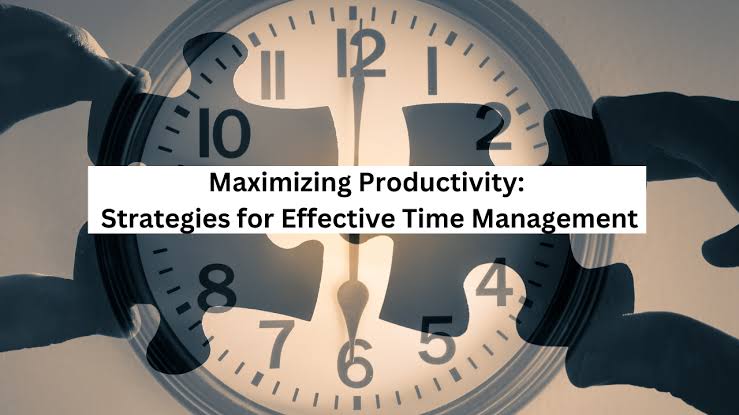Time is one of our most valuable and limited resources. In today’s fast-paced world of July 2025, with many digital distractions and multitasking, staying productive is harder than ever.
Many professionals, entrepreneurs, and students use time blocking to manage their time better. Time blocking means dividing your day into set blocks, each for a specific task or activity. This helps lower mental tiredness, cuts down distractions, and makes sure every hour is used purposefully. When done right, time blocking can greatly boost productivity and lower stress.
Understanding the Basics of Time Blocking
Time blocking is more than just scheduling tasks on a calendar. It’s a structured approach to managing time that allows you to focus deeply on one activity at a time, avoiding the inefficiencies of switching between tasks.
The method involves assigning specific time slots to every task, meeting, and break in your day. Instead of working from a to-do list that keeps growing, you work from a time-blocked calendar that clearly shows when and how long you will work on something.
For beginners, it can start with simply blocking out time for deep work, meetings, exercise, and rest. As you grow more comfortable with the technique, it becomes possible to block time for creative work, admin tasks, learning, and even family or social time.
Benefits of Time Blocking for Productivity
Time blocking enhances productivity by forcing you to be realistic about how much you can accomplish in a given day. Many people overestimate what they can do in a day and underestimate what they can do in a week. With time blocking, you begin to see where your hours go, and you can eliminate time-wasting habits.
By dedicating a block of time to one task, you eliminate multitasking, which studies have shown can reduce productivity by as much as 40%. Deep focus allows you to produce better work in less time.
Another major benefit is the sense of accomplishment. When you can visually see that a task is completed during its assigned time, it reinforces discipline and builds momentum to continue working productively throughout the day.
How to Begin Time Blocking Effectively
Starting with time blocking requires an understanding of your daily patterns and responsibilities. The first step is to audit your current schedule. Track how you spend your time over two or three days—this will help reveal areas where time is being wasted.
Next, identify your priorities. What tasks contribute most to your goals? Which ones are essential but time-consuming? Rank them and allocate time blocks accordingly. Begin by blocking out your most important tasks first, preferably during your peak productivity hours.
It’s also critical to include buffers between blocks. This gives you time to reset and handle unexpected interruptions. A rigid schedule without buffers often collapses under real-life pressure.
Using Technology to Support Time Blocking
As of 2025, there are numerous digital tools that make time blocking easier and more effective. Calendar apps like Google Calendar, Outlook, and Notion Calendar allow you to set recurring time blocks, color-code tasks, and send reminders.
Dedicated apps like Sunsama and Motion AI are designed specifically for time-blocking workflows. They integrate your tasks and calendars and help automate time allocation based on deadlines and availability.
Incorporating AI into your time blocking system helps you make real-time adjustments, avoid overbooking, and reschedule tasks intelligently. These tools act like personal assistants, helping you stay consistent without manual effort.
Creating Themed Days and Weekly Blocks
An advanced strategy within time blocking is theming your days. This is especially helpful for entrepreneurs and creatives who juggle different responsibilities. Themed days assign specific types of work to particular days—for example, Monday for meetings, Tuesday for content creation, Wednesday for deep work, and so on.
Weekly blocks also provide structure to projects that span several days. For instance, you might block Wednesday mornings for writing a report and Thursday afternoons for reviewing it. This structured repetition improves efficiency and reduces the cognitive load of deciding what to work on each day.
Themed days also help reduce task-switching fatigue and give your mind a rhythm that promotes deeper work and faster task execution.
Managing Interruptions and Staying Flexible
While time blocking is a powerful tool, it’s essential to stay flexible. Life happens—meetings run long, emergencies arise, and your energy may dip. Building flexibility into your schedule is a crucial part of mastering time blocking.
One way to handle this is by reserving “overflow” blocks each day. These are time slots left intentionally open to handle tasks that were interrupted or took longer than expected.
Communicating your blocked time to coworkers or family members can also help reduce unnecessary interruptions. Many professionals now set their calendars to “do not disturb” mode during deep work hours to maintain focus and minimize distractions.
Combining Time Blocking with Other Productivity Methods
Time blocking works even better when paired with other proven productivity strategies. For instance, combining it with the Pomodoro Technique—working in 25-minute focused intervals with 5-minute breaks—can help you maintain high energy levels throughout the day.
You can also align your time blocks with the Eisenhower Matrix, which helps you prioritize tasks based on urgency and importance. This way, you are not just filling your calendar—you are filling it with high-value tasks that move you closer to your goals.
Journaling your time-blocking experience weekly allows you to identify what’s working and what needs improvement. This reflection helps you refine your system continuously.
Tracking Progress and Making Adjustments
Time blocking is most effective when you regularly review your performance. Take time at the end of each week to assess whether you followed your blocks, which tasks took longer than expected, and what interruptions occurred.
Use this insight to make better estimates going forward. Over time, you’ll develop a strong sense of how long tasks truly take and how to optimize your energy throughout the day.
Adjusting your schedule isn’t a failure—it’s a sign of growth and understanding. With practice, you’ll find a rhythm that matches your work style and helps you unlock peak productivity every day.
Conclusion: Taking Control of Your Time
Maximizing productivity in 2025 is less about doing more and more about doing what matters most. Time blocking gives you the structure, clarity, and control needed to focus on high-priority work while maintaining balance and well-being.
By committing to this method, using the right tools, and refining your system over time, you can transform your days from chaotic to intentional. The power of time blocking lies not just in scheduling hours—but in reclaiming your life, one block at a time.



